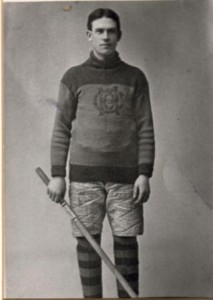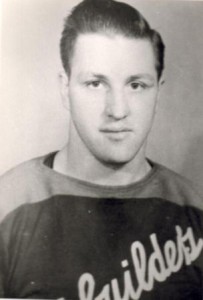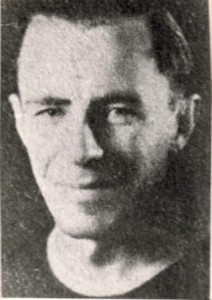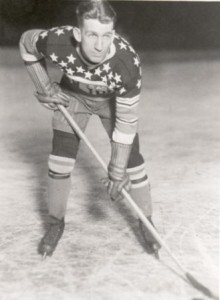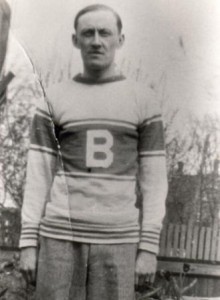 Huck Caesar was only a lightweight in physical proportions but he was “giant” on a baseball diamond. He never weighed any more than 135 pounds soaking wet
Huck Caesar was only a lightweight in physical proportions but he was “giant” on a baseball diamond. He never weighed any more than 135 pounds soaking wet
but he hit more balls for extra bases than any other Collingwood ball player we ever saw or knew.
He covered centre field like a blanket and ran the bases like a gazelle. As tough as leather, his active playing career lasted thirty-seven years and he spent two decades of the amazing career on Collingwood baseball, softball, hockey and lacrosse teams. He was the driving force on the great Collingwood baseball team of 1935, winners of the John Ross Robertson Trophy and the All- Ontario Intermediate baseball championship – the only Collingwood ball team to win a provincial intermediate title.
Born in the village of Proton in 1903, Huck moved to Alliston with his parents in 1908. He made the Alliston team at age fifteen and helped the club win three
league titles in 1924-25-26.During his career, he played in several hundred tournaments for various teams.
The Bank of Toronto moved him to Havelock in 1926 where he played baseball and hockey. Collingwood claimed him in 1927, but this town had no baseball club that year and Huck signed Creemore and later played with Thornbury for six years.
During his stay in Collingwood he helped organize the Senior Softball League where he managed and starred with the Bankers, five-times champions. He played
intermediate hockey for the Shipbuilders in the thirties and even took a crack at lacrosse, when that game made a brief comeback in the depths of the depression.
When intermediate baseball went into a decline in Collingwood in the late thirties, he played five years with Meaford and helped that town with the Ontario championship in 1939.
Huck left Collingwood in 1947 but he kept playing baseball and was with the Watford intermediate champs in 1947 and 1948. He was still playing at fifty-five and after his retirement, he wound up his diamond career by coaching his home town Alliston team to Ontario Midget title in 1957.

